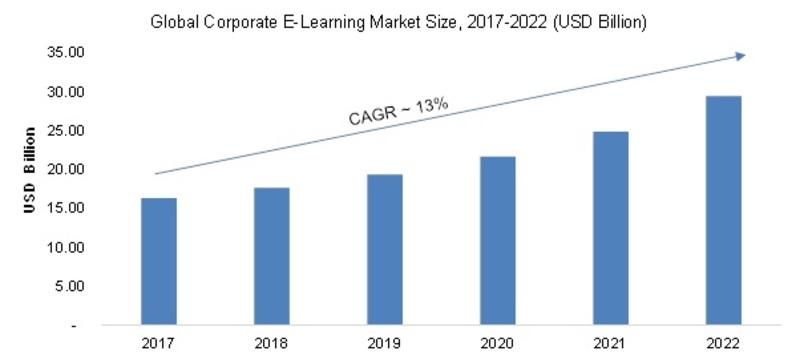Press release
Solar Energy Storage System (ESS) Market in Emerging Economies Trends and Opportunities
The Solar Energy Storage System (ESS) Market Overview
Solar Energy Storage System Market share was valued at 11.11 Billion USD in 2023. The Solar Energy Storage System Market Industry is projected 12.46 Billion US$ in 2024 to 31.31 Billion USD by 2032. The Solar Energy Storage System Market growth register at a CAGR of 12.2% during the forecast period (2024 - 2032).
The global transition to renewable energy sources is accelerating, with solar energy at the forefront of this shift. As solar energy adoption continues to grow, the need for efficient energy storage solutions has never been greater. This has given rise to the Solar Energy Storage System (ESS) market, a rapidly expanding sector that plays a pivotal role in optimizing solar power generation, enhancing grid stability, and supporting energy independence.What is Solar Energy Storage System (ESS)?
Request a Sample Copy of this Report at: https://www.wiseguyreports.com/sample-request?id=561103
A Solar Energy Storage System (ESS) refers to technologies that store surplus energy generated from solar panels for later use. The primary function of ESS is to balance the intermittent nature of solar energy. Since solar power generation depends on sunlight, it fluctuates throughout the day and is virtually non-existent at night. ESS solutions store excess solar energy produced during peak sunlight hours, making it available during low-production times such as nighttime or cloudy days.
The most common form of ESS technology used in the solar industry is battery storage, with lithium-ion (Li-ion) batteries being the dominant technology. Other storage systems, such as flow batteries, lead-acid batteries, and even thermal storage systems, are also used, though lithium-ion batteries remain the most popular due to their high energy density, efficiency, and decreasing costs.
Market Growth Drivers
Several factors are driving the growth of the Solar ESS market:
1. Rising Demand for Renewable Energy
With increasing concerns over climate change, energy security, and the need to reduce dependence on fossil fuels, the adoption of renewable energy has surged. Solar energy, with its sustainability and low operational costs, is one of the most attractive renewable sources. To optimize solar power use, integrating ESS is essential, leading to the growth of the ESS market.
2. Government Policies and Incentives
Governments worldwide are providing incentives to accelerate the adoption of renewable energy technologies. For instance, in regions such as North America, Europe, and Asia-Pacific, tax credits, subsidies, and rebates for solar installations and energy storage systems are driving market adoption. Policies such as Net Metering, Feed-in Tariffs (FiTs), and Energy Storage Mandates are also pivotal in encouraging ESS adoption.
3. Decreasing Battery Costs
A significant factor contributing to the ESS market's growth is the falling cost of battery technology, especially lithium-ion batteries. Over the past decade, battery prices have dropped by more than 70%, making solar energy storage more affordable for both residential and commercial users. The increasing competition and technological advancements in battery chemistry, manufacturing processes, and supply chain efficiencies continue to drive down prices.
4. Grid Stability and Energy Independence
Solar ESS enhances the stability of the electricity grid by providing backup power and balancing supply and demand. During times of high solar generation, surplus energy can be stored for later use, preventing grid instability caused by the mismatch between energy supply and demand. Additionally, ESS provides energy independence for consumers, particularly in off-grid and remote areas, where reliable grid infrastructure is lacking.
5. Technological Innovations
Innovation in storage technologies is also driving the growth of the ESS market. New advancements in solid-state batteries, flow batteries, and hybrid storage systems are expected to expand the capabilities of ESS beyond the current offerings. These innovations aim to improve energy efficiency, storage capacity, and battery life, further enhancing the appeal of ESS solutions.
Market Segmentation
The Solar ESS market can be broadly segmented into:
1. By Technology
Lithium-Ion Batteries: The most widely used ESS technology due to their high energy density, long cycle life, and decreasing cost. They dominate both residential and commercial sectors.
Lead-Acid Batteries: Older technology with lower efficiency and shorter lifespan but still popular in some regions due to lower upfront costs.
Flow Batteries: These batteries offer longer duration and are seen as an alternative for large-scale, long-duration storage but are still in the early stages of commercialization.
Other Technologies: This includes technologies like sodium-ion, zinc-air, and thermal storage systems that are emerging as potential alternatives in specific applications.
2. By Application
Residential: Homeowners install Solar ESS to store energy generated from rooftop solar panels for later use, often driven by the desire to reduce electricity bills and achieve energy independence.
Commercial & Industrial: Businesses are increasingly adopting Solar ESS to manage energy costs, reduce peak demand charges, and ensure a reliable power supply.
Utility-Scale: Large-scale storage solutions are used by utilities to stabilize grids and store energy from solar farms for distribution during peak demand periods.
Browse Premium Research insights: https://www.wiseguyreports.com/reports/solar-energy-storage-system-ess-market
3. By Region
North America: The United States and Canada are leading the adoption of Solar ESS, driven by government incentives, falling battery costs, and an increasing push toward renewable energy.
Europe: Europe has seen a significant increase in solar power installations, particularly in countries like Germany, Spain, and France. Strong environmental policies and renewable energy targets fuel the growth of the ESS market.
Asia-Pacific: Countries like China, Japan, India, and Australia are rapidly adopting solar energy systems, and with it, energy storage solutions. China, in particular, is a major player in both solar and ESS manufacturing.
Middle East & Africa: The region is gradually adopting solar energy storage solutions due to the abundance of sunlight and growing demand for off-grid solutions.
Challenges Facing the Solar ESS Market
Despite its promising growth, the Solar ESS market faces several challenges:
High Initial Costs: While the cost of batteries has decreased significantly, the upfront investment in Solar ESS systems can still be prohibitive for some residential and commercial users, especially in emerging markets.
Limited Storage Capacity: While lithium-ion batteries have improved, they still have limitations in terms of energy storage capacity and duration, which may limit their usefulness for large-scale energy storage needs.
Regulatory Challenges: The Solar ESS market is highly influenced by regional regulations and policies. Inconsistent or changing policies can create uncertainty for market participants and impact the pace of adoption.
The Future of the Solar ESS Market
The Solar ESS market is poised for robust growth in the coming years. With falling costs, technological advancements, and strong policy support, solar energy storage solutions will play a critical role in enabling a sustainable, clean energy future. As the demand for renewable energy continues to rise, and grid modernization becomes a necessity, ESS technologies will be integral to ensuring reliable, efficient, and resilient energy systems worldwide.
In conclusion, the Solar ESS market represents a key pillar in the renewable energy landscape, driving energy independence, grid stability, and sustainability. As technology continues to evolve and adoption expands across residential, commercial, and utility sectors, Solar ESS will be a key enabler of the global energy transition.
Other Related Reports:
Global Battery Energy Stroage System Market: https://www.wiseguyreports.com/reports/battery-energy-stroage-system-market
Global All Dielectric Self Supporting Cable Adss Market: https://www.wiseguyreports.com/reports/all-dielectric-self-supporting-cable-adss-market
Global Fixed Ground Power Units Gpu Market: https://www.wiseguyreports.com/reports/fixed-ground-power-units-gpu-market
Global Underground Gas Storage Ugs Market: https://www.wiseguyreports.com/reports/underground-gas-storage-ugs-market
Global Clean Hydrogen Energy Storage Technology Market: https://www.wiseguyreports.com/reports/clean-hydrogen-energy-storage-technology-market
Global Fuel Cell Reformer Market: https://www.wiseguyreports.com/reports/fuel-cell-reformer-market
Global Residential Small Wind Turbines Market: https://www.wiseguyreports.com/reports/residential-small-wind-turbines-market
Global 5G Base Station Backup Power Supply Market: https://www.wiseguyreports.com/reports/5g-base-station-backup-power-supply-market
Global Sofc And Soec Market: https://www.wiseguyreports.com/reports/sofc-and-soec-market
Global Ip65 Cable Entry Plate Market: https://www.wiseguyreports.com/reports/ip65-cable-entry-plate-market
About US:
Wise Guy Reports is pleased to introduce itself as a leading provider of insightful market research solutions that adapt to the ever-changing demands of businesses around the globe. We want our clients to have information that can be used to act upon their strategic initiatives. We, therefore, aim to be your trustworthy partner within dynamic business settings through excellence and innovation. By offering comprehensive market intelligence, our company enables corporate organizations to make informed choices, drive growth, and stay ahead in competitive markets.
Rohit Kamble
rohit.kamble@marketresearchfuture.in
WiseGuy Reports
Pune Maharashtra, India 411028
+91 20 6912 2998 | +162 825 80070 (US) | +44 203 500 2763 (UK)
Solar Energy Storage System Market share was valued at 11.11 Billion USD in 2023. The Solar Energy Storage System Market Industry is projected 12.46 Billion US$ in 2024 to 31.31 Billion USD by 2032. The Solar Energy Storage System Market growth register at a CAGR of 12.2% during the forecast period (2024 - 2032).
The global transition to renewable energy sources is accelerating, with solar energy at the forefront of this shift. As solar energy adoption continues to grow, the need for efficient energy storage solutions has never been greater. This has given rise to the Solar Energy Storage System (ESS) market, a rapidly expanding sector that plays a pivotal role in optimizing solar power generation, enhancing grid stability, and supporting energy independence.What is Solar Energy Storage System (ESS)?
Request a Sample Copy of this Report at: https://www.wiseguyreports.com/sample-request?id=561103
A Solar Energy Storage System (ESS) refers to technologies that store surplus energy generated from solar panels for later use. The primary function of ESS is to balance the intermittent nature of solar energy. Since solar power generation depends on sunlight, it fluctuates throughout the day and is virtually non-existent at night. ESS solutions store excess solar energy produced during peak sunlight hours, making it available during low-production times such as nighttime or cloudy days.
The most common form of ESS technology used in the solar industry is battery storage, with lithium-ion (Li-ion) batteries being the dominant technology. Other storage systems, such as flow batteries, lead-acid batteries, and even thermal storage systems, are also used, though lithium-ion batteries remain the most popular due to their high energy density, efficiency, and decreasing costs.
Market Growth Drivers
Several factors are driving the growth of the Solar ESS market:
1. Rising Demand for Renewable Energy
With increasing concerns over climate change, energy security, and the need to reduce dependence on fossil fuels, the adoption of renewable energy has surged. Solar energy, with its sustainability and low operational costs, is one of the most attractive renewable sources. To optimize solar power use, integrating ESS is essential, leading to the growth of the ESS market.
2. Government Policies and Incentives
Governments worldwide are providing incentives to accelerate the adoption of renewable energy technologies. For instance, in regions such as North America, Europe, and Asia-Pacific, tax credits, subsidies, and rebates for solar installations and energy storage systems are driving market adoption. Policies such as Net Metering, Feed-in Tariffs (FiTs), and Energy Storage Mandates are also pivotal in encouraging ESS adoption.
3. Decreasing Battery Costs
A significant factor contributing to the ESS market's growth is the falling cost of battery technology, especially lithium-ion batteries. Over the past decade, battery prices have dropped by more than 70%, making solar energy storage more affordable for both residential and commercial users. The increasing competition and technological advancements in battery chemistry, manufacturing processes, and supply chain efficiencies continue to drive down prices.
4. Grid Stability and Energy Independence
Solar ESS enhances the stability of the electricity grid by providing backup power and balancing supply and demand. During times of high solar generation, surplus energy can be stored for later use, preventing grid instability caused by the mismatch between energy supply and demand. Additionally, ESS provides energy independence for consumers, particularly in off-grid and remote areas, where reliable grid infrastructure is lacking.
5. Technological Innovations
Innovation in storage technologies is also driving the growth of the ESS market. New advancements in solid-state batteries, flow batteries, and hybrid storage systems are expected to expand the capabilities of ESS beyond the current offerings. These innovations aim to improve energy efficiency, storage capacity, and battery life, further enhancing the appeal of ESS solutions.
Market Segmentation
The Solar ESS market can be broadly segmented into:
1. By Technology
Lithium-Ion Batteries: The most widely used ESS technology due to their high energy density, long cycle life, and decreasing cost. They dominate both residential and commercial sectors.
Lead-Acid Batteries: Older technology with lower efficiency and shorter lifespan but still popular in some regions due to lower upfront costs.
Flow Batteries: These batteries offer longer duration and are seen as an alternative for large-scale, long-duration storage but are still in the early stages of commercialization.
Other Technologies: This includes technologies like sodium-ion, zinc-air, and thermal storage systems that are emerging as potential alternatives in specific applications.
2. By Application
Residential: Homeowners install Solar ESS to store energy generated from rooftop solar panels for later use, often driven by the desire to reduce electricity bills and achieve energy independence.
Commercial & Industrial: Businesses are increasingly adopting Solar ESS to manage energy costs, reduce peak demand charges, and ensure a reliable power supply.
Utility-Scale: Large-scale storage solutions are used by utilities to stabilize grids and store energy from solar farms for distribution during peak demand periods.
Browse Premium Research insights: https://www.wiseguyreports.com/reports/solar-energy-storage-system-ess-market
3. By Region
North America: The United States and Canada are leading the adoption of Solar ESS, driven by government incentives, falling battery costs, and an increasing push toward renewable energy.
Europe: Europe has seen a significant increase in solar power installations, particularly in countries like Germany, Spain, and France. Strong environmental policies and renewable energy targets fuel the growth of the ESS market.
Asia-Pacific: Countries like China, Japan, India, and Australia are rapidly adopting solar energy systems, and with it, energy storage solutions. China, in particular, is a major player in both solar and ESS manufacturing.
Middle East & Africa: The region is gradually adopting solar energy storage solutions due to the abundance of sunlight and growing demand for off-grid solutions.
Challenges Facing the Solar ESS Market
Despite its promising growth, the Solar ESS market faces several challenges:
High Initial Costs: While the cost of batteries has decreased significantly, the upfront investment in Solar ESS systems can still be prohibitive for some residential and commercial users, especially in emerging markets.
Limited Storage Capacity: While lithium-ion batteries have improved, they still have limitations in terms of energy storage capacity and duration, which may limit their usefulness for large-scale energy storage needs.
Regulatory Challenges: The Solar ESS market is highly influenced by regional regulations and policies. Inconsistent or changing policies can create uncertainty for market participants and impact the pace of adoption.
The Future of the Solar ESS Market
The Solar ESS market is poised for robust growth in the coming years. With falling costs, technological advancements, and strong policy support, solar energy storage solutions will play a critical role in enabling a sustainable, clean energy future. As the demand for renewable energy continues to rise, and grid modernization becomes a necessity, ESS technologies will be integral to ensuring reliable, efficient, and resilient energy systems worldwide.
In conclusion, the Solar ESS market represents a key pillar in the renewable energy landscape, driving energy independence, grid stability, and sustainability. As technology continues to evolve and adoption expands across residential, commercial, and utility sectors, Solar ESS will be a key enabler of the global energy transition.
Other Related Reports:
Global Battery Energy Stroage System Market: https://www.wiseguyreports.com/reports/battery-energy-stroage-system-market
Global All Dielectric Self Supporting Cable Adss Market: https://www.wiseguyreports.com/reports/all-dielectric-self-supporting-cable-adss-market
Global Fixed Ground Power Units Gpu Market: https://www.wiseguyreports.com/reports/fixed-ground-power-units-gpu-market
Global Underground Gas Storage Ugs Market: https://www.wiseguyreports.com/reports/underground-gas-storage-ugs-market
Global Clean Hydrogen Energy Storage Technology Market: https://www.wiseguyreports.com/reports/clean-hydrogen-energy-storage-technology-market
Global Fuel Cell Reformer Market: https://www.wiseguyreports.com/reports/fuel-cell-reformer-market
Global Residential Small Wind Turbines Market: https://www.wiseguyreports.com/reports/residential-small-wind-turbines-market
Global 5G Base Station Backup Power Supply Market: https://www.wiseguyreports.com/reports/5g-base-station-backup-power-supply-market
Global Sofc And Soec Market: https://www.wiseguyreports.com/reports/sofc-and-soec-market
Global Ip65 Cable Entry Plate Market: https://www.wiseguyreports.com/reports/ip65-cable-entry-plate-market
About US:
Wise Guy Reports is pleased to introduce itself as a leading provider of insightful market research solutions that adapt to the ever-changing demands of businesses around the globe. We want our clients to have information that can be used to act upon their strategic initiatives. We, therefore, aim to be your trustworthy partner within dynamic business settings through excellence and innovation. By offering comprehensive market intelligence, our company enables corporate organizations to make informed choices, drive growth, and stay ahead in competitive markets.
Rohit Kamble
rohit.kamble@marketresearchfuture.in
WiseGuy Reports
Pune Maharashtra, India 411028
+91 20 6912 2998 | +162 825 80070 (US) | +44 203 500 2763 (UK)
Permanent link to this press release:
Copy
Please set a link in the press area of your homepage
to this press release on woodPRI. woodPRI disclaims liability for any content contained in
this release.
Recommend

/newsMicroencapsulation Market Deep Analysis on Key Players - Dow Corning, Encapsys, Syngenta Crop Protection, Evonik Industries, 3M and Bayer
Market Study Report Adds Global Microencapsulation Market Size, Status and Forecast 2024 added to its database. The report provides key statistics on the current state of the industry and other analytical data to understand the market.
Extensive research is required for choosing the appropriate cor...

/newsGermany Airbag Market Size 2023: Global Share, Industry And Report Analysis By 2030 | Hyundai Mobis Co., Ltd. Key Safety Systems, Inc. Robert Bosch GmbH
Germany airbag market is expected to grow at a CAGR of around 6% during the forecast period. Germany Airbag Market research report refers to gathering and analyzing significant market data serve as best medium for various industry players to launch novel product or service. It is vital for key firms...

/newsSecurities Brokerages And Stock Exchanges Market Outlook 2021: Big Things are Happening
A new intelligence report released by HTF MI with title "Global Securities Brokerages And Stock Exchanges Market Survey & Outlook" is designed covering micro level of analysis by Insurers and key business segments, offerings and sales channels. The Global Securities Brokerages And Stock Exchange...

/newsRenewable Chemicals Market Emerging Trends and Competitive Landscape Forecast to 2028
The renewable chemicals market was valued at US$ 80,566.30 million in 2021 and is projected to reach US$ 1,76,750.76 million by 2028 it is expected to grow at a CAGR of 11.9% from 2021 to 2028. The research report focuses on the current market trends, opportunities, future potential of the market, a...

/newsHow Coronavirus is Impacting Cold Brew Coffee, Global Market Volume Analysis, Size, Share and Key Trends 2020-2026
"Market Latest Research Report 2020:
Los Angles United States, February 2020: The Cold Brew Coffee market has been garnering remarkable momentum in the recent years. The steadily escalating demand due to improving purchasing power is projected to bode well for the global market. QY Research's lates...

/newsCorporate E-Learning Market - Global Industry Size, Share, Key Players Analysis that are Infor, SkillSoft Corporation, Adrenna, CERTPOINT Systems and others with Regional Forecast to 2022
Overview:
E-Learning is used to enhance the learning procedures for newer job requirements and to make employees sound about the internal and external changes in the market and respective organizations. This method has created considerable differences in the ways of training and developing employee...
